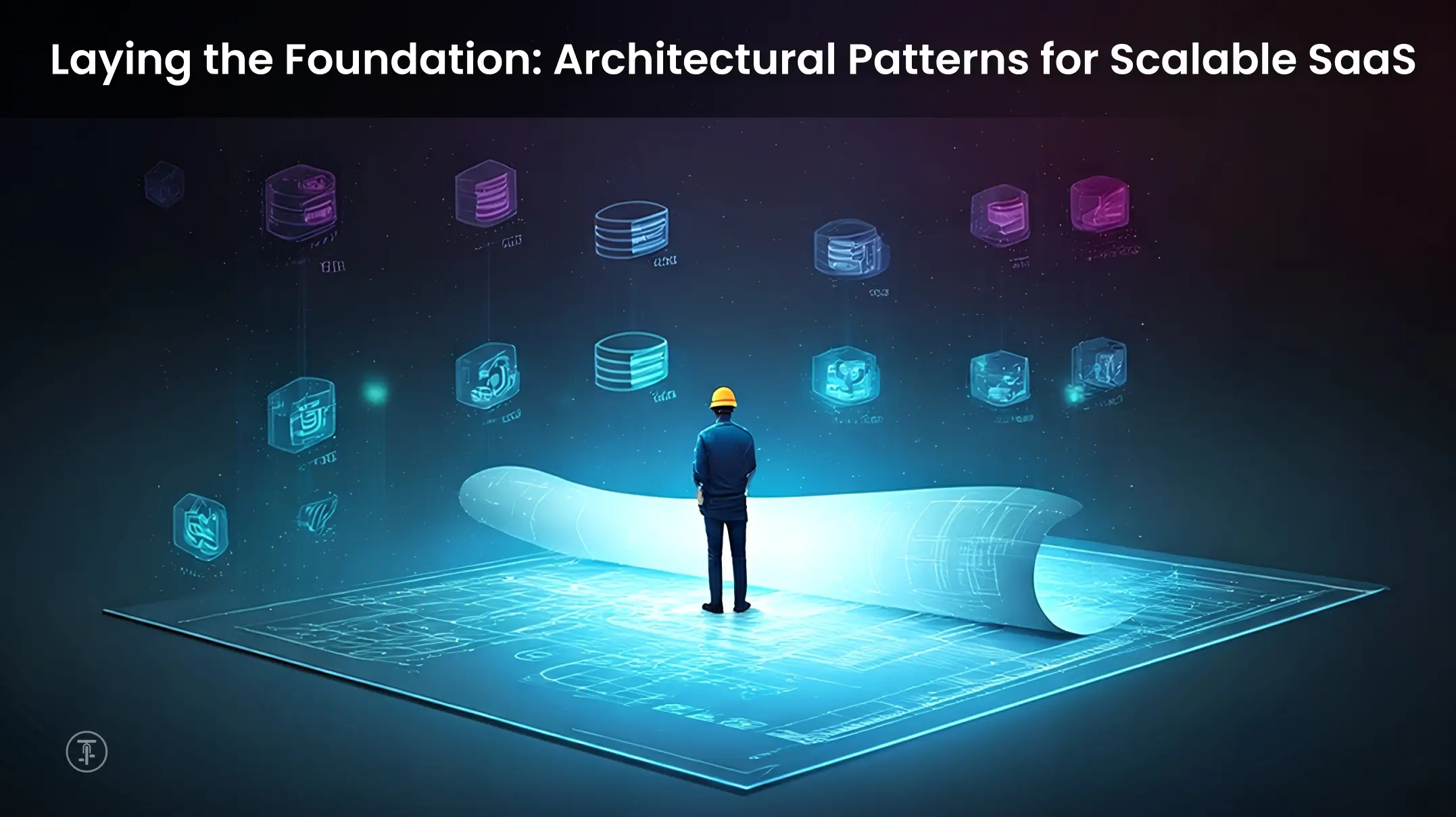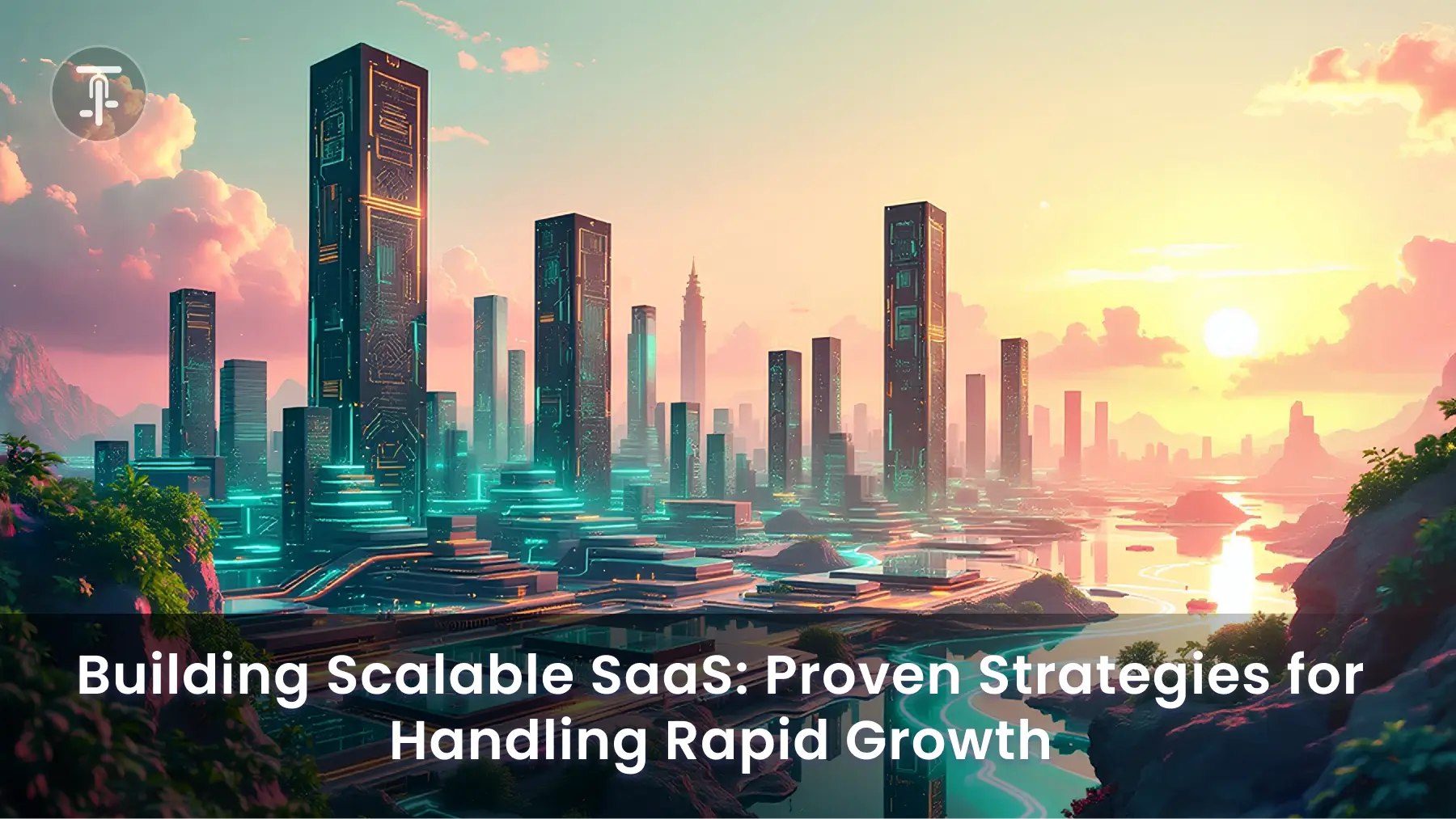Introduction
Recall the original thrill of going live with your SaaS platform? That first wave of customers, that buzz of early adoption. But what if that original trickle became a flood? Overnight, that once-agile platform begins to groan beneath the weight. Frustrated load times become the norm, angry customers vent their frustration, and that vision of painless growth seems more and more elusive. It’s a situation many SaaS entrepreneurs are all too familiar with, and to our surprise, a recent study found that more than 60% of scaling SaaS companies cite performance declines directly attributed to poor initial architecture. At Pedals Up, we don’t think this has to be your narrative.
Decoding Scalability: More Than Just Handling Traffic
Before we get into the “how,” let’s establish what real SaaS scalability looks like. It’s not all about being able to support more concurrent users. A scalable SaaS application has some distinct features:
- Horizontal Scaling: Scalability to bring additional resources (such as servers or database instances) to share the load without involving major changes to the app’s architecture. This tends to be easier than vertical scaling (hardware upgrades).
- Elasticity: The ability to scale resources automatically up or down in real-time based on demand. This provides maximum performance during high usage and cost-effectiveness during low usage.
- Performance Under Load: Consistent responsiveness and speed even with high numbers of simultaneous users and large volumes of data.
- Fault Tolerance: The capacity to tolerate failure in individual components without resulting in large-scale outages or loss of data. Redundancy and strong error handling are essential.
- Data Scalability: Handling and querying increasingly large datasets without a reduction in performance. This is sometimes about selecting appropriate database technologies and using data partitioning techniques.
- Cost Efficiency: Scaling resources to balance costs. Cloud platforms tend to offer the cost flexibility necessary for cost-efficient scalability.
- Maintainability: Architecting the application in a modular, well-architected manner to allow easier updates, deployments, and continued maintenance as the system grows.
Laying the Foundation: Architectural Patterns for Scalable SaaS

The architectural decisions you make at the beginning have a significant influence on the scalability of your SaaS application. Some of the most important patterns to keep in mind are:
1. Microservices Architecture: Embracing Granular Independence
Rather than a monolithic application where everything is tightly coupled, a microservices architecture decomposes the application into small, independent services that talk to one another through APIs.
Benefits for Scalability:
- Independent Scaling: Individual microservices can be scaled independently according to their resource requirements. A user authentication service, for instance, may face more load compared to a reporting service.
- Technology Diversity: Microservices can be developed using different technology stacks suitable for their function.
- Quicker Development and Deployment: Smaller, separate teams can develop and deploy services more rapidly with less chance of affecting the entire application.
- Better Fault Isolation: If there’s a failure in one microservice, the application as a whole is less likely to crash.
- Real-Life Example: Netflix notoriously converted to microservices from a monolithic architecture, which allowed them to manage enormous amounts of streaming volume and rapid updates with increased speed and flexibility.
2. Stateless Applications: Horizontal Expansion Design
A stateless application never stores any client-specific session state on the server. Every request from a client is treated as a new, self-contained transaction. Session state is usually stored on the client side (e.g., in cookies or local storage) or in a shared data store.
Benefits for Scalability:
- Easy Horizontal Scaling: Because servers don’t keep session state, it’s easy to add more servers to distribute increased load. Any server can service any request.
- Enhanced Reliability: In the event of a failed server, user sessions are not lost because the state is being kept somewhere else.
- Streamlined Load Balancing: Load balancing between several stateless servers is easier.
- Industry Insight: Stateless designs are being embraced more and more by new web applications and APIs to take advantage of cloud environments’ scalability advantages.
3. Asynchronous Processing: Outsourcing Resource-Intensive Tasks
Synchronous operations mean that the user waits for a task to finish before continuing. Offloading long-running and resource-bounded tasks to asynchronous background processes is essential in a scalable SaaS application.
Advantages for Scalability:
- Enhanced Responsiveness: The principal application is not blocked because users will not wait for long-running processes to complete.
- Optimization of Resources: Background operations can be processed by specialized workers to leave resources free for the handling of user requests.
- Improved Reliability: If a background operation fails, it can usually be retried without affecting the user experience.
- Case Study: An online store SaaS application could process orders, send email notifications, and generate reports asynchronously via message queues such as RabbitMQ or Kafka.
4. Database Scalability: Overcoming the Data Bottleneck
The database is usually a major bottleneck when scaling SaaS applications. Various approaches can be taken:
- Database Replication: Developing several copies of the database to split read traffic and offer redundancy.
- Database Sharding (Partitioning): Splitting the database into smaller, autonomous partitions on a given key (such as user ID, tenant ID). This enables splitting both read and write loads.
- Read Replicas: Developing read-only replicas of the database to service heavy read traffic, leaving the primary database for writes.
- NoSQL Databases: Using NoSQL databases such as MongoDB or Cassandra, which are typically optimized for horizontal scalability and processing high amounts of unstructured or semi-structured data.
- Pedals Up Perspective: We have extensive experience in the design and implementation of numerous database scalability approaches optimized for the unique requirements of SaaS applications. We assist you in selecting the appropriate database technologies and optimizing your data architecture for performance and growth.
Practical Tips for Developing Scalable SaaS Applications
Aside from architectural styles, several practical techniques help in the development of scalable SaaS applications:
- Taking Advantage of Cloud Infrastructure: Cloud environments such as AWS, Azure, and Google Cloud offer the infrastructure, services, and tools that are used in developing highly scalable and fault-tolerant applications. Auto-scaling, load balancing, and managed databases are just a few among them.
- Effective Caching Strategies: Applying caching on multiple levels (browser, CDN, application, database) could effectively cut down database load and enhance response times.
- Content Delivery Networks (CDNs): Serving static content (images, CSS, JavaScript) from geographically dispersed servers to enhance loading times for users across the globe.
- Optimized Code and Queries: Writing optimum code and optimizing database queries are essential to performance, particularly as the application grows.
- Monitoring and Alerting: Having strong monitoring and alerting in place to monitor KPIs and actively detect potential scalability problems before they affect users.
- Infrastructure as Code (IaC): Utilizing Terraform or CloudFormation to provision and manage infrastructure programmatically, allowing for quicker and more predictable scaling.
- Continuous Integration and Continuous Deployment (CI/CD): Automating build, testing, and deployment processes to make frequent and consistent updates possible, essential to adapting to expansion and user feedback.
- Comprehensive Load Testing: Consistent load testing to simulate maximum user loads and detect performance bottlenecks before they occur in a production environment.
How Pedals Up Empowers Your Scalability Journey
At Pedals Up, we are not merely a SaaS application development firm; we are your growth partners for building scalable and sustainable growth. Our skills include:
- Scalable Architecture Design: Our seasoned architects design resilient and scalable architectures based on your unique business requirements and growth expectations.
- Cloud-Native Development: We utilize the strengths of cloud platforms to construct applications that are naturally scalable, fault-tolerant, and cost-optimized.
- Database Optimization: Our database specialists make sure your data layer can deal with growing loads and perform at optimal levels.
- Performance Engineering: We apply strict performance testing and optimization methods to make sure your application stays responsive under load.
- DevOps and Automation: We deploy CI/CD pipelines and Infrastructure as Code to automate deployments and make scaling smooth.
- Ongoing Maintenance and Support: We also offer ongoing maintenance and support so that your application is always scalable and runs best with your growing business.
Ready to develop a SaaS app that can grow alongside your aspirations?
Creating a scalable SaaS application is not a destination but a journey. It involves taking careful thought, well-informed architectural choices, and ongoing optimization. Through an understanding of the fundamental principles of scalability, embracing the right architectural patterns, and applying real-world strategies, you can develop a platform that not only satisfies today’s requirements but is also ready for tomorrow’s expansion.
Pedals Up is at your service along the way. Our extensive SaaS application development and scalability knowledge guarantees you a strong, high-performance, and future-ready platform.




